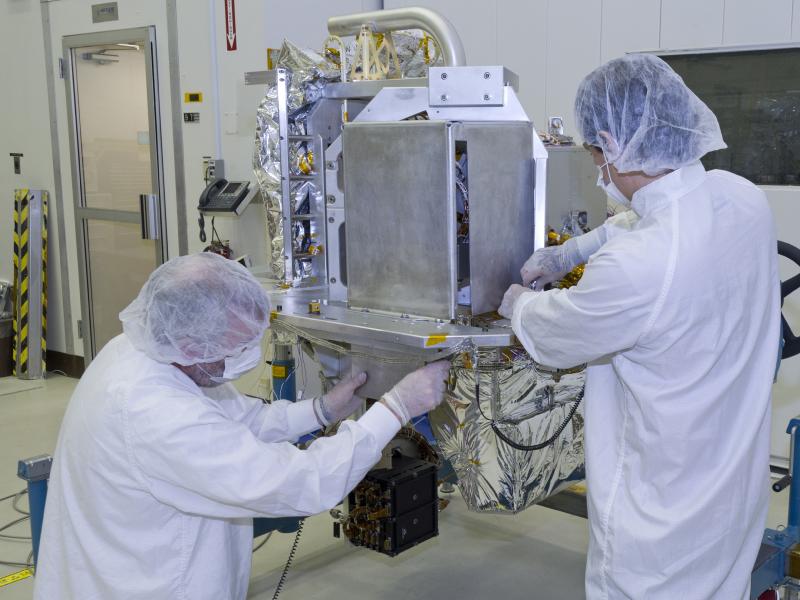
|
Exploring Human Impacts on Climate |
||||||||
|
|||||||||
 |

Mathematics Skill or Topic Area:
Properties of Linear Equations
Next Gen Science Framework ESS2.D Weather and climate; ESS3.C Human impact on Earth systems; ESS3.D Global climate change
Common Core ELA for Science: RST.6-8.2. Determine the central ideas or conclusions of a text; provide an accurate summary of the text distinct from prior knowledge or opinions.RST.6-8.8. Distinguish among facts, reasoned judgment based on research findings, and speculation in a text. RST.6-8.9. Compare and contrast the information gained from experiments, simulations, video, or multimedia sources with that gained from reading a text on the same topic.
Common Core Math Standard: CCS.8.SP.A.1 Construct and interpret scatter plots for bivariate measurement data to investigate patterns of association between two quantities; CCS.8.SP.A.2 Know that straight lines are widely used to model relationships between two quantitative variables; CCS.8.SP.A.3 Use the equation of a linear model to solve problems in the context of bivariate measurement data, interpreting the slope and intercept.

Video Engagement: How Humans are Affecting Our Planet Students learn how the greenhouse effect keeps more of the sun’s heat and energy within Earth’s atmosphere causing temperatures on Earth to rise. This video segment explains the effect warmer temperatures are playing on Earth. (8 minutes). View Program
|
Engage your students with a press release: NASA's New Carbon-Counting Instrument Leaves the Nest
NASA's Orbiting Carbon Observatory-2 (OCO-2) spacecraft is NASA's first mission dedicated to studying atmospheric carbon dioxide. Carbon dioxide is the most significant human-produced greenhouse gas and the principal human-produced driver of climate change.
The OCO-2 mission will sample the atmosphere above Earth's land and ocean, collecting more than half a million measurements of carbon dioxide concentration over Earth's sunlit hemisphere every day for at least two years. It will provide the first complete picture of the regional-scale geographic distribution and seasonal variations of both human and natural sources of carbon dioxide emissions and their sinks—the places where carbon dioxide is removed from the atmosphere and stored.
Scientists will use OCO-2 mission data to improve global carbon cycle models, better characterize the processes responsible for adding and removing carbon dioxide from the atmosphere, and make more accurate predictions of global climate change.
The mission provides a key new measurement that can be combined with other ground and aircraft measurements and satellite data to answer important questions about the processes that regulate atmospheric carbon dioxide and its role in the carbon cycle and climate. This information could help policymakers and business leaders make better decisions to ensure climate stability and retain our quality of life. The mission will also serve as a pathfinder for future long-term satellite missions to monitor carbon dioxide.
Press release date line - May 10, 2012 Press release
location: [
Click Here ] |
|
Explore math connections with SpaceMath@NASA
Problem I - Estimating Your Home's Carbon Footprint - Students graph the tabulated number of kilograms of carbon dioxide generated per kilowatt-hour, and use this graph to convert a monthly electricity bill into kilograms of carbon dioxide generated. [ Open PDF ]
Problem II -
Estimating the Carbon Footprint for Traveling -
Students compare and graph the amount of carbon dioxide produced by domestic air travel and the
family car, and use this to
predict which form of transportation is' greener' for a 2000 mile trip.
[ Open
PDF ]
Explain
your thinking: Write
your own problem - Using information
found in the Math Connection problems, the press release or the video
program, create your own math problem. Explain why you set the problem up this
way, and how you might find its answer.
Evaluate
your understanding: Challenge Problem -
Students explore population change, global temperature change and carbon dioxide change and predict during
which year China and the USA will
achieve the same level of carbon dioxide generation.
[ Open
PDF ]

NASA / JPL
3-D Solar System
Extend your new knowledge - Visit Earth using Eyes on the Earth and learn how to use weighted averaging to estimate the average temperature of Earth. [ Open PDF ]